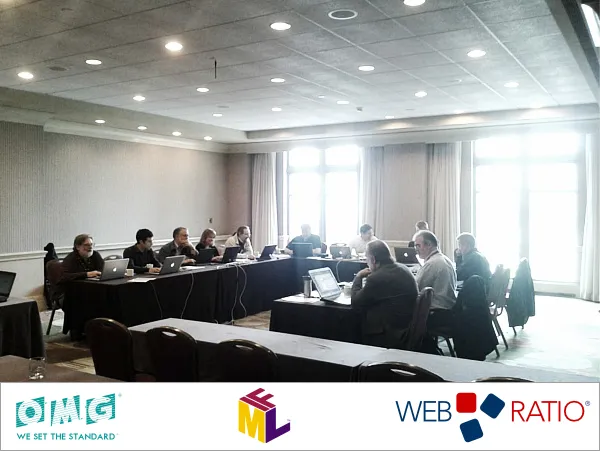IFML, the Interaction Flow Modeling Language, is ready to go

Thanks to WebRatio, the first international standard in user interaction and front end modeling is now a reality. Indeed, IFML 1.0, the Interaction Flow Modeling Language has been adopted by the Object Management Group in March 2014 during the technical meeting in Reston, VA, USA on 27th march.
In the last twenty years, capabilities such as form-based interaction, information browsing, link navigation, multimedia content fruition, and interface personalization have become mainstream and are implemented on top of a variety of technologies and platforms. However, no standards for platform-independent design have emerged as a standard in the industry so far. Thus, front-end development continues to be a costly and inefficient process, where manual coding is predominant, reuse is low, and cross-platform portability is limited.
This is where IFML can contribute the most, being a visual notation for platform-independent design of software
front end. IFML features direct involvement of influential industrial players within the OMG, seamless integration with widespread modeling languages such as UML, BPMN, SysML and the whole MDA suite, and availability of both open-source editors and industrial-strength implementations supporting end-to-end development.
IFML was actually adopted one year ago, in March 2013, as Beta specification. Since then, the IFML Finalization Task Force has worked hard to bring the specification to perfection.
IFML followed the long path of the OMG standardization process, from the RFP (Request for Proposal) phase, to Initial Proposal submission, to Revised Proposal submission, to adoption in Beta version, and at the end to finalized adoption.
I must admit that initially the IFML initiative was seen with some skepticism and suspicion by the big guns of software design, system design and system architectures. User interaction was (and still is) seen as a side or minor issue in such development scenarios. However, along the path to adoption, I dare to say that IFML was more and more regarded with respect and positive attitude by all the people that got informed about it. That’s why we always got excellent reception of our various submissions, which were seen as high-quality, grounded to real industrial experience, and supported by a strong commercial implementation (namely, the WebRatio Platform).
The finalized IFML specification is a perfectly tailored and focused result, which clearly identifies 6 core aspects that can be specified with the language:
- view structure, i.e., visibility and reachability of view containers;
- view content, , i.e., view components contained within view containers;
- events, originating either from user interaction or system-triggered occurrences;
- event transitions, i.e., the effect of events on the user interface;
- parameter binding, i.e., input-output dependencies between view elements; and
- binding to the business logic, through references to application logic models and data models.
This clear separation of concerns, together with the supporting implementation platform provided by WebRatio, which provides full code generation and quick prototyping, make IFML palatable to a variety of users and usage scenarios.
I look forward to see the response of the industry in the mid-term, also in terms of further implementations by tool vendors.
And remember, IFML will always be ready for your needs of extension or personalization too!